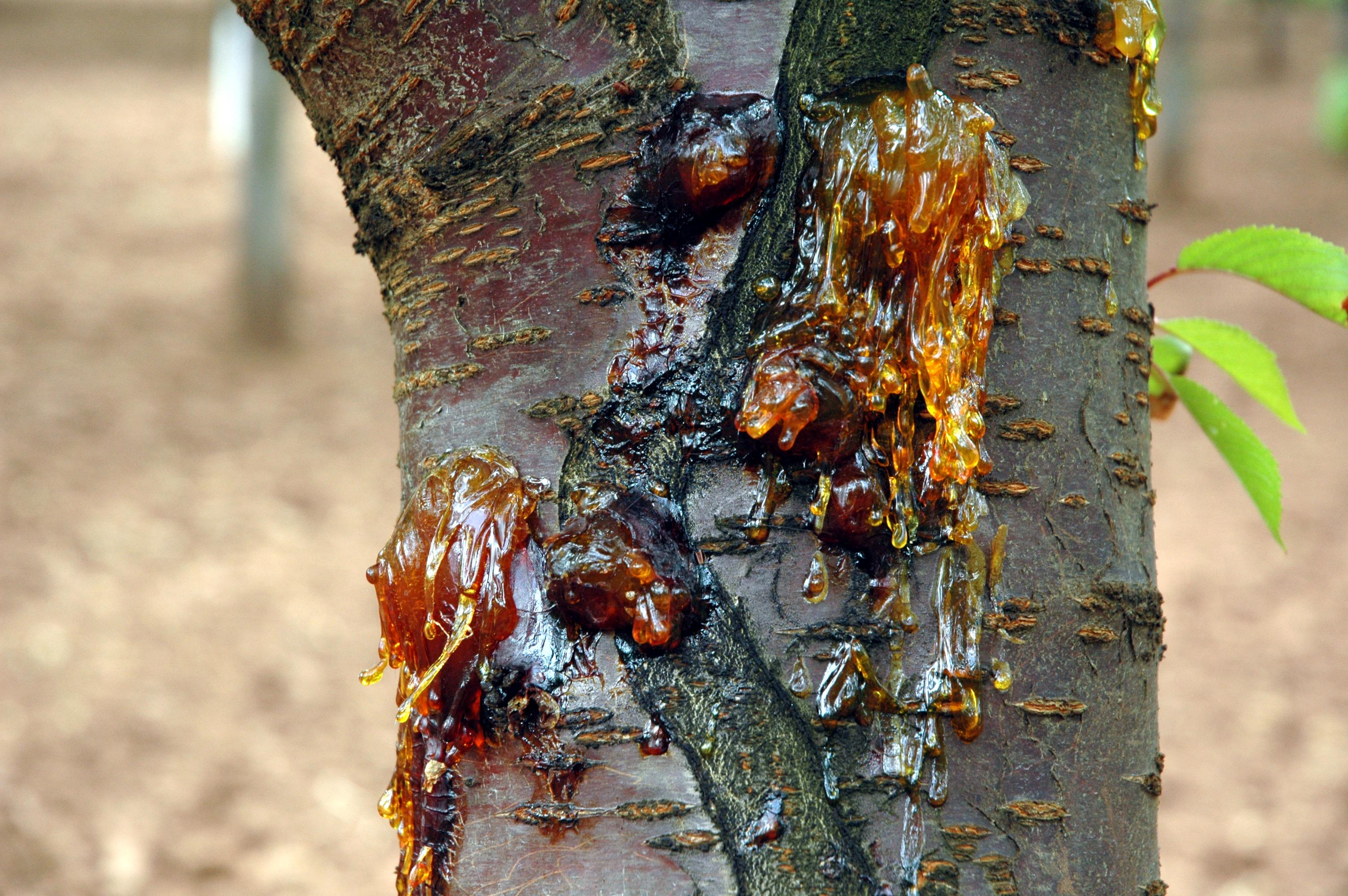Bacterial Canker of Peach
Return to Diseases
Bacterial canker (Pseudomonas syringae pv syringae) results in canker development and twig blight symptoms, more commonly on cherry and less frequently on peach. Dark, sunken lesions (cankers) develop on stems, and gum exudes from the site (gummosis). Tissue underneath the bark appears reddish brown. Gummosis becomes more severe and a sour odor (also called sour sap) may develop. Cankers enlarge and girdle branches; sudden branch death occurs during summer months. Bacterial cells ooze from cankers in early spring (2 to 3 weeks after bud break) or when weather is cool and wet. Infection occurs through buds and shoots or through injured bark tissue. Pruning wounds and freeze injury enhance infection of the trunk and scaffold limbs. Secondary fungal diseases may develop at canker site (e.g. perennial canker). Bacterial canker and freeze injury are the direct causes of peach tree death associated with Peach Tree Short Life (PTSL) syndrome.

Bacterial canker on branch.
(Photo: George Sundin, Michigan State University)

Bacterial canker gums (gummosis) exuding from infection site.
(Photo: Jay W. Pscheidt, Oregon State University)
Management:
- Avoid injury and wounds (freeze, insect, pruning, nematodes).
- Consider planting cold-tolerant cultivars.
- Prune in late winter or early spring for more rapid callus formation.
- Maintain plant health; reduce plant stress.
- Sandy soils and drought stress increase susceptibility to infection.
- Practice proper sanitation (remove diseased wood before spring growth begins; discard debris away from orchard).
